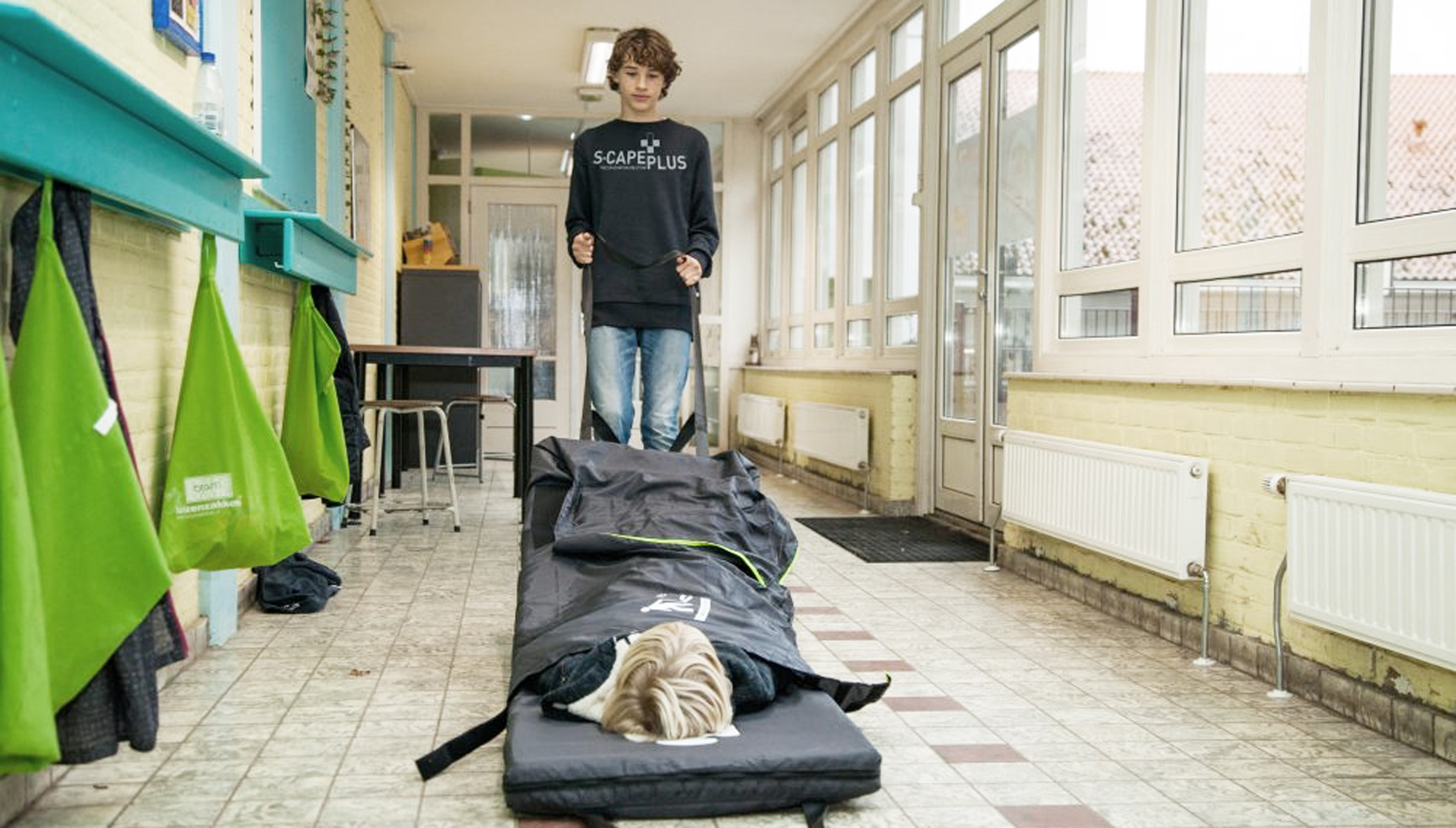Patient Evacuation Product Design: Feature Advantages

By Lynn Moloney, President, Advanced Egress Solutions, Inc.
The safety regulations of most buildings, designed in the past and those that are newly constructed, assume that most egresses will be used by ambulatory occupants. Although the majority of people may never need to be evacuated in their entire life, some will. Many in hospitals, nursing homes, and other institutions are non-ambulatory, or are not able bodied enough to evacuate on their own. When the need arises for the emergency discharge of these people, the design of the device employed will matter the most since it is critical to the optimization of the evacuation strategy for all people.
There are many product design features that are critical to the successful evacuation of the non-ambulatory. Based on patient need, type of facility, building architecture, and available staff, the features below should be considered when choosing an evacuation device. A good patient evacuation device will include one or more of the features below. Also listed, are links to products that satisfy each design feature, so their unique benefits can be more fully researched.
Full Body Wrap Design
This type of overall design is often referred to as the ‘burrito’ (soft shell full wrap), as opposed to a ‘taco’ (hard shell with open top). The full body wrap design (or burrito) fully cocoons the patient and utilizes the patient’s own mattress or a built-in mat as a cushion. Since the patient is softly surrounded, and wrapped tightly, they feel more secure. The patient’s own mattress or built-in mat makes it less likely that the patient will be impacted by terrain and stairway bumps along the way to safety.
- S-CAPEPOD Evacuation Sheet (Uses patients own mattress)
- S-CAPEPLUS Evacuation Mat (Built-in mat)
- Hospital Aids Ski Evacuation Sheet (Uses patients own mattress)
- Hospital Aids Bariatric EvacMat (Built-in mat)
Readiness, Visibility, and Convenience
An evacuation device should be readily available for each non-ambulatory patient. Ideally, each room should have an evacuation device mounted on a bedside wall, stored in a closet, or kept under the mattress of each patient. This will help minimize confusion or delay during an emergency. What is more, when the device is stored it should be compact and non-obtrusive to everyday tasks.
- Hospital Aids Ski Evacuation Pad (Compact and wall mountable)
- Hospital Aids Ski Evacuation Sheet (Remains in place under patient mattress)
- S-CAPEPLUS Evacuation Mat (Compact and wall mountable)
- S-CAPEPOD Evacuation Sheet (Remains in place under patient mattress)
- Hospital Aids Bariatric EvacMat (Self-contained packaging)
- AlbacMat Emergency Rescue Mat (Self-contained packaging)
Ease-of-use (No training needed)
When an emergency occurs, there is no guarantee that a trained staff member will be immediately available to assist non-ambulatory patients. A good design feature is ease-of-use; one that can be used by a passer-by and does not require training.
- S-CAPEPLUS Evacuation Mat (Currently used in more than 40 countries across 6 continents, easy step-by-step instructions printed on outside of packaging)
- Wi-Care Newborn Baby Mover Apron (Intuitive design)
Flexibility
Narrow stairways and hallways with turns or those with unanticipated obstructions require an evacuation device that is flexible with sufficient padding to protect the patient. Engineering that accounts for the unpredictable is greatly valued in these circumstances and therefore is a consideration among emergency preparedness professionals. Typically, the ‘burrito’ type device will have the flexibility to accommodate the unexpected twist and turns of evacuation.
- Hospital Aids Ski Evacuation Sheet
- Hospital Aids Ski Evacuation Pad
- S-CAPEPLUS Evacuation Mat
- S-CAPEPOD Evacuation Sheet
- Hospital Aids Bariatric EvacMat
- AlbacMat Emergency Rescue Mat
Fast Evacuation Down Stairwells
Maneuvering non-ambulatory patients down stairwells can impeded rescue, particularly if there is additional hardware to manage to do so. A self-contained device that can slide across flat terrain and slide down stairwells equally as fast, without pullies, ropes, or added hardware, can help facilitate a speedy evacuation.
- Hospital Aids Ski Evacuation Sheet
- Hospital Aids Ski Evacuation Pad
- S-CAPEPLUS Evacuation Mat
- S-CAPEPOD Evacuation Sheet
- AlbacMat Emergency Rescue Mat
- Hospital Aids Bariatric EvacMat
- Wi-Care Newborn Baby Mover Apron
Elevate Off Ground (Evacuation of Infants)
The most vulnerable of patients are the just born or infants that are ill. Since safety is paramount, special engineering accommodations must be made. Easy access and visibility to infants at all times helps to ensure their well-being, and a design that elevates infants off the ground minimizes the impact of bumps. In addition, since there may be many infants in a facility, evacuation devices that can transport multiple babies on flat terrain and down stairwells by one staff member are highly valued. Whether on flat terrain or down stairways, keeping infants off the ground helps to facilitate a safe evacuation.
- Wi-Care Newborn Baby Mover Apron (hands free, 1 staff member, 3 babies)
- Doro EVACU B Baby Evacuation System (1 staff member, 6 babies, oxygen cradle)
About Advanced Egress Solutions
Advanced Egress Solutions (AES) was founded to provide safe, affordable, and easy-to-use evacuation devices that any rescuer can use. Their founding runs deep in the understanding that non-ambulatory individuals are sometimes left behind because of the lack of quality, long-lasting equipment needed to facilitate their rescue.
To AES, evacuation of the vulnerable is personal and those feelings are reflected in the many initiatives they undertake to help communities prepare better. AES is a Member of the National Association of Contingency Planners, a member of The Meta Leadership for Preparedness Summit, and a member of several community response teams and other emergency preparedness organizations. AES is a Certified Woman Owned Business located in the USA, and has been the recipient of the Advocates in Action Award, and the Jenkins Lifetime Achievement Award in Education.
